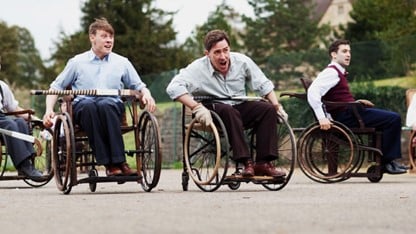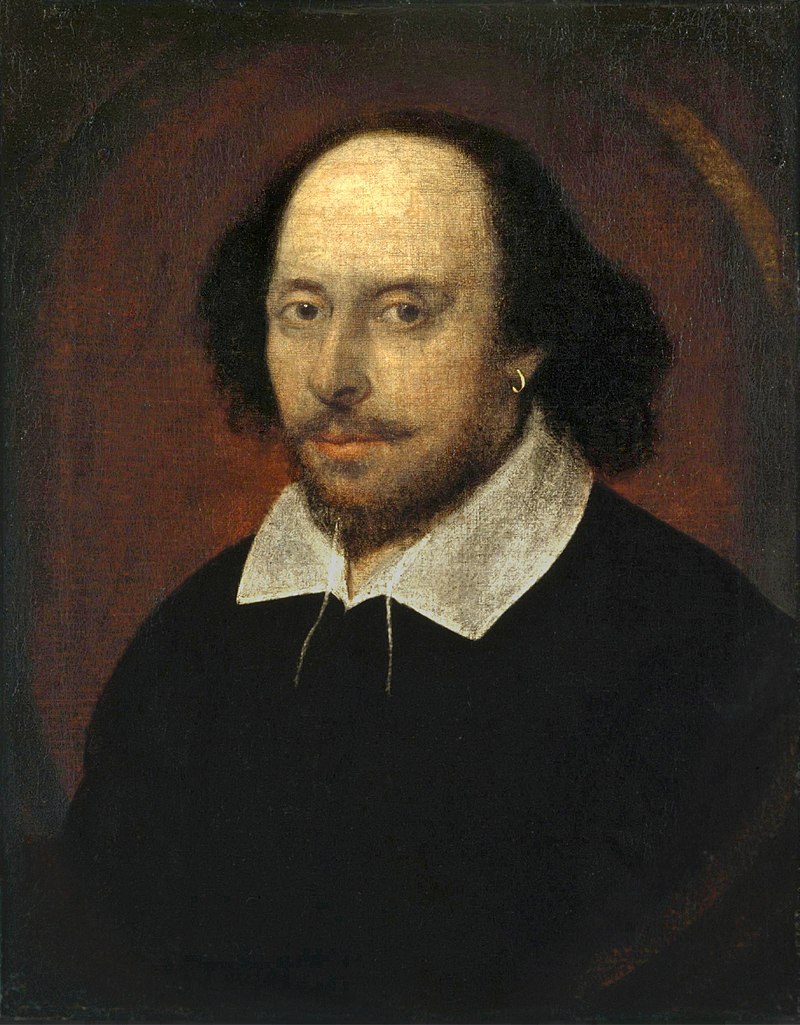by Dr Jo Halpin.
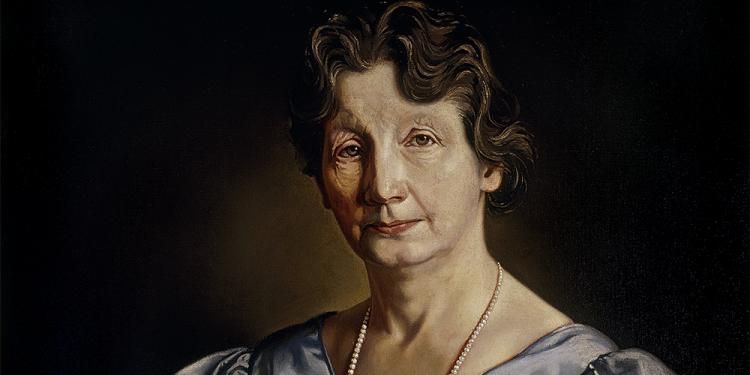 |
| Portrait of Edith Pretty by Dutch artist Cor Visser. © National Trust / Robin Pattinson |
Edith Pretty is famous for unearthing an Anglo-Saxon burial ship on her land at Sutton Hoo, near Woodbridge, Suffolk, in 1939 – an event that has now been made into a film, The Dig, starring Carey Mulligan and Ralph Fiennes.
But dig a little deeper into her life and you find plenty of connections to hockey, including to the formation of the All England Women’s Hockey Association (AEWHA).
The daughter of wealthy Manchester industrialist Robert Dempster, Edith and her older sister Elizabeth were enrolled at Wimbledon House School, Brighton, in 1894, when Edith was 11 years old. The school (later known as Roedean) was considered radical for the time because of its wide-ranging sports programme for girls, with pupils encouraged to take part in hockey, tennis and cricket, as well as running, swimming, gymnastics, fencing and dancing.
Young Edith – “a promising, if unspectacular, sportswoman” (Skelcher & Durrant, 2006) – took full advantage, playing hockey for the school’s 3rd XI and her house XI, for which she was vice-captain. She also captained her house cricket and drilling teams, was a competent gymnast, and a member of the tennis club.
The teacher in charge of drill and games at the school was Christabel Lawrence, one of the five women who met in a coffee shop in Brighton on 10 April 1895 to set up the AEWHA. Lawrence would become the first honorary secretary and treasurer of the association, and Wimbledon House School a founding member.
The idea for an English governing body had come about after a tour to Ireland by Newnham College, Cambridge, during the Christmas holiday of 1894/95. In the run-up to the meeting in Brighton, Irish side Alexandra College were on a return tour to England, and their itinerary included a game against Wimbledon House School.
Although Edith is unlikely to have been in the team, it is highly likely that she and her fellow pupils watched the match – which the school won 1-0!
They would probably also have been encouraged to attend the pseudo international match that took place in Brighton immediately before the tea-shop meeting, between the Irish tourists and a hurriedly assembled English representative side – a game that ended 0-0.
So, Edith’s first year at Wimbledon House coincided with the school’s central role in the formation of the AEWHA – and it brought her into contact with her future husband’s family.
She became firm friends with Mildred Pretty, one of nine children of Ipswich-based corset manufacturer William Pretty, whose factory was a major employer in the town from the mid-1800s. Edith met Mildred’s brother Frank while still in Brighton, and the couple eventually married in 1926.
The Prettys were prominent on the early 20th-century Suffolk sporting scene. Frank and his half-brother Ernest were members of Ipswich men’s hockey club, founded in 1899, but also played for men’s and mixed teams based out of the family’s large home, Goldrood House.
Other family members who turned out for Goldrood’s mixed XI were: Hilda and Elsie (Frank and Ernest’s sisters); Margaret (aunt) and her husband Russell Paul; Reginald (cousin); and Mabel Pretty (sister-in-law).
Hilda, Elsie, Margaret, Mabel and Mildred also played for Ipswich Ladies, while Margaret and Mildred were selected for the Suffolk county team.
Margaret also got involved in the administration of the sport, serving as president of the Suffolk Women’s Hockey Association and on the council of the East Anglian Ladies Hockey Association.
With such active future in-laws, it is unlikely that Edith, who travelled extensively after leaving Wimbledon House School in 1899, gave up playing hockey and other sports altogether. Evidence of her involvement has yet to be found, however – although I’m Pretty sure it must be out there!
*The Dig was released on Netflix on 29 January.
Sources: Mary Skelcher & Chris Durrant, Edith Pretty: from socialite to Sutton Hoo (Leiston Press, Leiston, 2006); Jo Halpin, ‘Will you walk into our parlour?’: The rise of leagues and their impact on the governance of women’s hockey in England 1895-1939 (PhD thesis, May 2019); East Anglian Daily Times; Suffolk & Essex Free Press; The Social Review.
 |
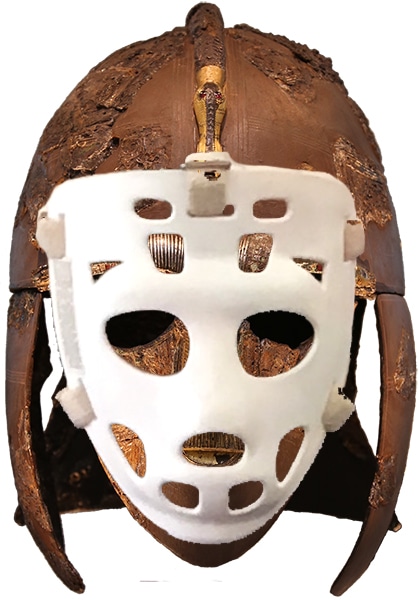 |
|
|
The Anglo-Saxon Sutton Hoo helmet bears a passing resemblance to the early hockey facemasks of the 1980s. |
||
Sutton Hoo at the British Museum
Discover more about the Suttton Hoo treasures with online content from the British Museum. Click here for an overview of their collection, including a virtual tour of the gallery, and here for a 15-minute podcast discussion with the Curator [10:24 – 25:53].
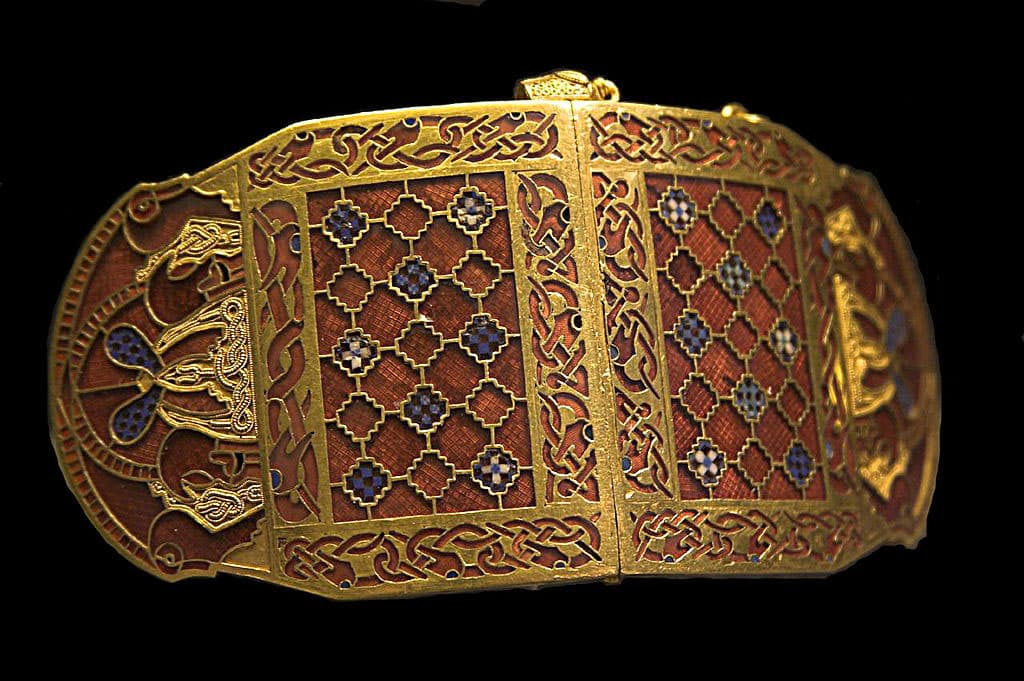 |
|
Sutton Hoo Gold Shoulder Clasp. |

